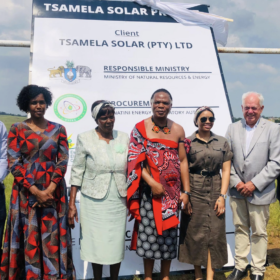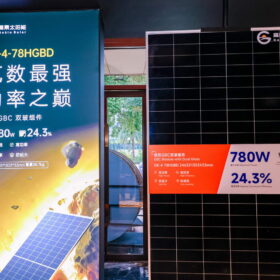Bhutan tenders 120 MW solar project
Bhutan’s authorities are seeking a developer to design, supply, install, test and commission a 120 MW solar farm. The deadline for applications is Jan. 26, 2026.
Tunisia switches on largest solar project to date
UAE-based Amea Power has completed a 120 MW solar project in Tunisia, the country’s first above 100 MW.
Key takeaways from France’s Energaia trade show
France’s Energaia trade fair drew record crowds and exhibitors last week, underscoring continued investment appetite in solar and storage, even as developers warn that policy delays and a residential slowdown could weigh on activity after 2025.
EU security doctrine highlights high-risk dependency on Chinese solar inverters
A document published by the European Commission on strengthening the EU’s economic security lists reliance on Chinese solar inverters as an example of high-risk dependency. It adds the commission plans to address such risks under its cybersecurity framework.
Eswatini starts 20 MW solar project
Eswatini has launched a 20 MW solar project, the first in a series of five expected to add 75 MW of new capacity.
Wood Mackenzie predicts 2-year decline in global solar inverter demand
Wood Mackenzie’s latest analysis expects market uncertainty in China, Europe and the U.S. to cause two consecutive years of contraction in the global solar inverter market, forecasting a fall to 577 GWac this year and 523 GWac in 2026.
Italy clears 710 MW of solar in Puglia, challenges regional PV rules
The italian government says it is fast-tracking utility-scale solar, approving about 710 MW of mainly agrivoltaic projects in Puglia while moving to curb regional limits on where PV plants can be built, sharpening tensions over land use and energy policy.
Gokin Solar launches new back-contact solar module series
Gokin has launched back-contact solar modules ranging from 480 W to 780 W for residential, C&I and utility-scale projects. The series supports 1,500 V systems and reaches efficiencies of up to 24.8%.
Germany brings world’s first supercapacitor STATCOM online
Germany has connected the world’s first supercapacitor-based STATCOM to the grid, with Siemens Energy and transmission system operator TenneT positioning it as a blueprint to replace fossil-fuel generators in providing instantaneous reserve and reactive power.
Metlen flicks switch on 120 MW of solar in Australia
Another large-scale PV facility is now operating at full capacity in the Australian state of Queensland, as Greek energy company Metlen Energy and Metals has officially activated the 120 MW Munna Creek Solar Farm.










